|
Di seguito gli interventi pubblicati in questa sezione, in ordine cronologico.
Welcome to our first unspun news audio edition. As you know or may not know, we have been unspinning spin doctored news since 2010, and have been heavily censored for it.

So we decided to bring you our censored information, through this new medium. In this podcast we will be talking about the current situation in Egypt, as well as covering a wide variety of headlines which were on the front page of Yahoo News, July 3rd.
You will find out that the mainstream news is actually just as easy to debunk/ridicule as absurd conspiracy theories, such as reptilian aliens.
Source and Audio: anarchadia.com
The 2012 french elections were rigged, censored, and manipulated. Nicolas Sarcozy had been spotted before the elections buying a house in the Hamptons; which proves that the french ruling elite had already changed their minds to whom their “guy” was going to be this time. The French and International Mainstream Media completely censored several other candidates as they always do, particularly a french comic, who is known for calling these past decades of French politics “a constantly encouraged hymn towards fascism”. That is what our elites love to do, keep us guessing while we run like mice through their mazed contraptions. And you cannot blame them, it is their instinct to survive, it just so happens that they force their instinct on everyone else through fascism against the poor.
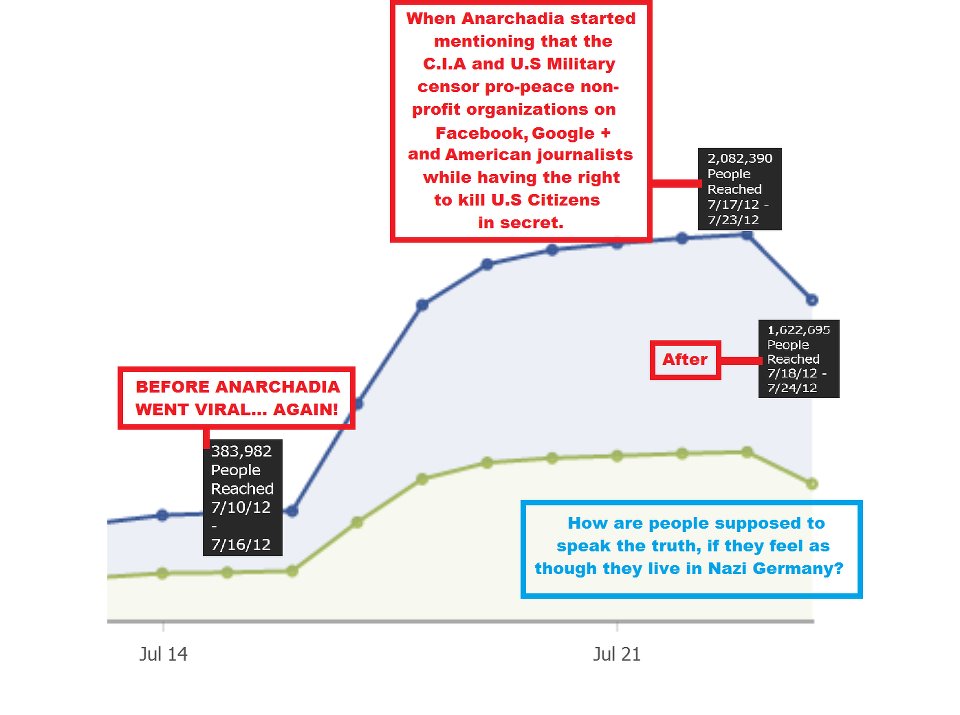
Since C.I.A Sarcozy came into power, the mainstream media had been portraying France as this homophobic nation full of nationalists. But in reality, when 500 homophobes in France would get together it made front page news around the world. Yet protests of 500,000 staging protests simultaneously against austerity measures imposed by the E.U, barely even get mentioned in the local media. France is an anarchist nation since Mikhail Bakunin, and the same corporations that funded Hitler and Stalin are doing everything in their power to get nazi sympathy in France back. Communist as well. I went to a socialist university in France jam packed with anarchist haters (communists, nazis), and they were renting out space to this corporation that was developing photo face recognition software for the modern global Gestapo. 3 of the so called activists at that school even knew it existed, and they thought it was good for them… statists!
The big problem you see is this, Francois Hollande and Nicolas Sarcozy were part of the same think tank “Le Siecle” ( which already has a bad reputation and many people in it with bad reputations). Francois’s wife worked for Bolloré, one of the most influential families in France. Nicolas Sarcozy was also Berlusconi’s lawyer in the 1980’s and was a personal friend of both Berlusconi and Putin. This helps understand why Sarcozy rebuilt/privatized the non-existent French military in support of NATO, so that America could justify internationally having gone to Afghanistan and Iraq. Psyops programs were started in Germany and France to turn public opinion towards supporting George Bush’s imperialist war. Remember when Sarcozy and Bush went on a boat ride? Or do you remember how cozy Bush and Blair’s relationship was (Polanski made a movie about it, and you saw what happened to him)?

This was our icon on Facebook for over 2 years, and Facebook recently deleted it saying it was breaching their terms of engagement. If it is, that means that Facebook’s terms of engagement are against freedom of speech.
And with all this information of course you could argue that conflict of interest in the 21st Century is so common and normal. And some will even go even further, because they are so brainwashed; they will inadvertently say that conflict of interest should stay legal for some of the world’s wealthiest and most sophisticated mass murderers, who manipulate elections around the World, in support of private corporate interests. Is it? Because that sort of entangled mainstream rhetoric sure was paid for by some sophisticated S.O.Bs.
Conflict of interest might have been uncommon, if the U.S had not already intervened in European elections many times before, and hadn’t already supported right-wing fascists like the FN’s Lepen family (who helped serve as a tool to bring France more towards accepting corporate fascism as did the fascist party of Russia). The CIA has supported other well known fascists including Berlusconi, and Putin’s only competition the fascist party itself (there is no difference between Putin and the russian fascist party, if you noticed they always vote and support the same political objectives, those of the upper class). Signor Putin, is beyond any doubt a CIA asset, who is trying to bring Russia into NATO in order to “fight” against the “Axis of evil”, or pretend to and then act as though they brought peace, instead of more profits to their pockets.
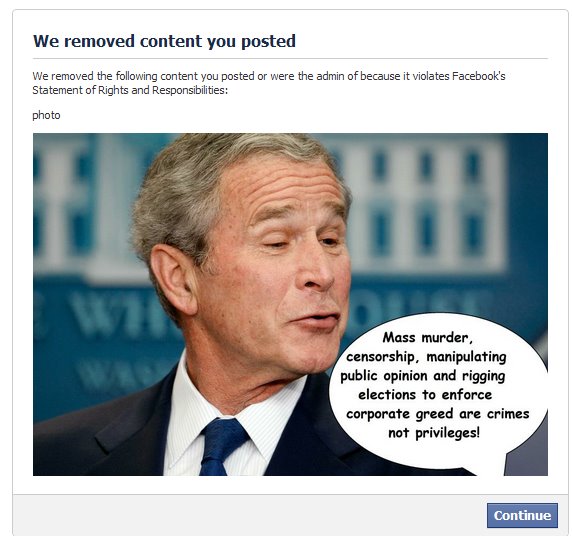
The very definition of right wing is this ( many people these last decades pretended to be on either side of the political spectrum, but who are actually beyond any doubt right wing pions):
“ In politics, the Right, right-wing and rightist has been defined as the support or acceptance of social hierarchy.”
Let us try and see if this rule applies:
Hitler?… Definitely a Social Hierarchist… therefore right-wing
Stalin?… Definitely a Social Hierarchist… therefore right-wing
Bush?… Definitely a Social Hierarchist… therefore right-wing
Ayatollah of Iran?… Definitely a Social Hierarchist… therefore right-wing
King of Saudi Arabia?… Definitely a Social Hierarchist… therefore right-wing
Sarcozy?… Definitely a Social Hierarchist… therefore right-wing
“Le Siecle?…. Definitely for Social Hierarchism… therefore right-wing
Obama?… Definitely a Social Hierarchist… therefore right-wing
U.K Monarchy?… for Social Hierarchism… therefore right-wing
Leader of the D.P.R.K?…. Definitely a Social Hierarchist… therefore right-wing
Napoleon?…. Definitely a Social Hierarchist… therefore right-wing
Roman Empire?… Definitely for Social Hierarchism.. therefore right-wing
Which proves my point, that all true leftist defenders have been murdered for thousands of years, by social hierarchists who always indoctrinated the poor into believing that hierarchist/elitist systems (while being on top, and self-proclaiming people intelligent or not), were good. Why were so many poor people murdered all throughout history? So that a few people could manipulate everyone else? Doesn’t seem very intelligent, and definitely not a good way to make sure monetary inequality doesn’t occur. Robin Hood wasn’t written yesterday. And neither was Oliver Twist, the history of Diogenes of Sinope, or all those other anarchist spirits who have been black-holed from history, simply because they were against helping social hierarchists manipulate those who had nothing, time and time again, for thousands of years.

Source: anarchadia.com - FURTHER READING:
A French website recently stated that Sarcozy was a pion for the CIA, since the website has been deleted and all of their links are now dead.
François Hollande Nicolas Sarkozy… both in the same club “Le Siecle ” …. with the likes of Édouard de Rothschild … socialist my ASS!….
http://en.wikipedia.org/wiki/Le_Si%C3%A8cle_(think_tank)
The two names are in sequence in the section “personnalités politiques”:
http://fr.wikipedia.org/wiki/Le_Si%C3%A8cle ”
The bittersweet argument over whether Aspartame is safe or not has been going on for a long time. On one side we have medical evidence that suggests we should avoid using it and on the other side we lean on the FDA’s approval that suggests it is safe. Since generally that seems to be the factor that many continue to hold trust based upon, I thought we could look into the Aspartame story to find out how it came to be accepted as safe by the FDA. You would think that something so widely used and so well accepted would have quite the pristine story leading to its acceptance. I imagine one will discover otherwise after reading this post.
It all starts in the mid 1960′s with a company called G.D. Searle. One of their chemists accidentally creates aspartame while trying to create a cure for stomach ulcers. Searle decides to put aspartame through a testing process which eventually leads to its approval by the FDA. Not long after, serious health affects begin to arise and G.D. Searle comes under fire for their testing practices. It is revealed that the testing process of Aspartame was among the worst the investigators had ever seen and that in fact the product was unsafe for use. Aspartame triggers the first criminal investigation of a manufacturer put into place by the FDA in 1977. By 1980 the FDA bans aspartame from use after having 3 independent scientists study the sweetener. It was determined that one main health effects was that it had a high chance of inducing brain tumors. At this point it was clear that aspartame was not fit to be used in foods and banned is where it stayed, but not for long.

Early in 1981 Searle Chairman Donald Rumsfeld (who is a former Secretary of Defense.. surprise surprise) vowed to “call in his markers,” to get it approved. January 21, 1981, the day after Ronald Reagan’s inauguration, Searle took the steps to re-apply aspartame’s approval for use by the FDA. Ronald Reagans’ new FDA commissioner Arthur Hayes Hull, Jr., appointed a 5-person Scientific Commission to review the board of inquiry’s decision. It did not take long for the panel to decide 3-2 in favor of maintaining the ban of aspartame. Hull then decided to appoint a 6th member to the board, which created a tie in the voting, 3-3. Hull then decided to personally break the tie and approve aspartame for use. Hull later left the FDA under allegations of impropriety, served briefly as Provost at New York Medical College, and then took a position with Burston-Marsteller. Burstone-Marstella is the chief public relations firm for both Monsanto and GD Searle. Since that time he has never spoken publicly about aspartame.
It is clear to this point that if anything the safety of aspartame is incredibly shaky. It has already been through a process of being banned and without the illegitimate un-banning of the product, it would not be being used today. Makes you wonder how much corruption and money was involved with names like Rumsfeld, Reagan and Hull involved so heavily. In 1985, Monsanto decides to purchase the aspartame patent from G.D. Searle. Remember that Arthur Hull now had the connection to Monsanto. Monsanto did not seem too concerned with the past challenges and ugly image aspartame had based on its past. I personally find this comical as Monsanto’s products are banned in many countries and of all companies to buy the product they seem to fit best as they are champions of producing incredibly unsafe and untested products and making sure they stay in the market place.

Since then, aspartame has been under a lot of attack by scientists, doctors, chemists and consumers about it’s safety and neurotoxic properties. Piles of comprehensive studies have been completed that show aspartame is a cause for over 90 serious health problems such as cancer, leukemia, headaches, seizures, fibromyalgia, and epilepsy just to name a few. We have written several articles discussing various affects of aspartame. Aspartame Leukemia Link. Aspartame and Brain Damage.
For a full timeline on aspartame’s legal and safety battles, expand the box below.
Full Aspartame Timeline
Timeline
December 1965– While working on an ulcer drug, James Schlatter, a chemist at G.D. Searle, accidentally discovers aspartame, a substance that is 180 times sweeter than sugar yet has no calories.
Spring 1967– Searle begins the safety tests on aspartame that are necessary for applying for FDA approval of food additives.
Fall 1967– Dr. Harold Waisman, a biochemist at the University of Wisconsin, conducts aspartame safety tests on infant monkeys on behalf of the Searle Company. Of the seven monkeys that were being fed aspartame mixed with milk, one dies and five others have grand mal seizures.
November 1970– Cyclamate, the reigning low-calorie artificial sweetener — is pulled off the market after some scientists associate it with cancer. Questions are also raised about safety of saccharin, the only other artificial sweetener on the market, leaving the field wide open for aspartame.
December 18, 1970– Searle Company executives lay out a “Food and Drug Sweetener Strategy’ that they feel will put the FDA into a positive frame of mind about aspartame. An internal policy memo describes psychological tactics the company should use to bring the FDA into a subconscious spirit of participation” with them on aspartame and get FDA regulators into the “habit of saying, “Yes”.”
Spring 1971– Neuroscientist Dr. John Olney (whose pioneering work with monosodium glutamate was responsible for having it removed from baby foods) informs Searle that his studies show that aspartic acid (one of the ingredients of aspartame) caused holes in the brains of infant mice. One of Searle’s own researchers confirmed Dr. Olney’s findings in a similar study.
February 1973– After spending tens of millions of dollars conducting safety tests, the G.D. Searle Company applies for FDA approval and submits over 100 studies they claim support aspartame’s safety.
March 5, 1973– One of the first FDA scientists to review the aspartame safety data states that “the information provided (by Searle) is inadequate to permit an evaluation of the potential toxicity of aspartame”. She says in her report that in order to be certain that aspartame is safe, further clinical tests are needed.
May 1974– Attorney, Jim Turner (consumer advocate who was instrumental in getting cyclamate taken off the market) meets with Searle representatives to discuss Dr. Olney’s 1971 study which showed that aspartic acid caused holes in the brains of infant mice.
July 26, 1974– The FDA grants aspartame its first approval for restricted use in dry foods.
August 1974– Jim Turner and Dr. John Olney file the first objections against aspartame’s approval.
March 24, 1976– Turner and Olney’s petition triggers an FDA investigation of the laboratory practices of aspartame’s manufacturer, G.D. Searle. The investigation finds Searle’s testing procedures shoddy, full of inaccuracies and “manipulated” test data. The investigators report they “had never seen anything as bad as Searle’s testing.”
January 10, 1977– The FDA formally requests the U.S. Attorney’s office to begin grand jury proceedings to investigate whether indictments should be filed against Searle for knowingly misrepresenting findings and “concealing material facts and making false statements” in aspartame safety tests. This is the first time in the FDA’s history that they request a criminal investigation of a manufacturer.
January 26, 1977– While the grand jury probe is underway, Sidley & Austin, the law firm representing Searle, begins job negotiations with the U.S. Attorney in charge of the investigation, Samuel Skinner.
March 8, 1977– G. D. Searle hires prominent Washington insider Donald Rumsfeld as the new CEO to try to turn the beleaguered company around. A former Member of Congress and Secretary of Defense in the Ford Administration, Rumsfeld brings in several of his Washington cronies as top management.
July 1, 1977– Samuel Skinner leaves the U.S. Attorney’s office and takes a job with Searle’s law firm. (see Jan. 26th)
August 1, 1977– The Bressler Report, compiled by FDA investigators and headed by Jerome Bressler, is released. The report finds that 98 of the 196 animals died during one of Searle’s studies and weren’t autopsied until later dates, in some cases over one year after death. Many other errors and inconsistencies are noted. For example, a rat was reported alive, then dead, then alive, then dead again; a mass, a uterine polyp, and ovarian neoplasms were found in animals but not reported or diagnosed in Searle’s reports.
December 8, 1977– U.S. Attorney Skinner’s withdrawal and resignation stalls the Searle grand jury investigation for so long that the statue of limitations on the aspartame charges runs out. The grand jury investigation is dropped.
June 1, 1979– The FDA established a Public Board of Inquiry (PBOI) to rule on safety issues surrounding NutraSweet.
September 30, 1980– The Public Board of Inquiry concludes NutraSweet should not be approved pending further investigations of brain tumors in animals. The board states it “has not been presented with proof of reasonable certainty that aspartame is safe for use as a food additive.”
January 1981– Donald Rumsfeld, CEO of Searle, states in a sales meeting that he is going to make a big push to get aspartame approved within the year. Rumsfeld says he will use his political pull in Washington, rather than scientific means, to make sure it gets approved.
January 21, 1981– Ronald Reagan is sworn in as President of the United States. Reagan’s transition team, which includes Donald Rumsfeld, CEO of G. D. Searle, hand picks Dr. Arthur Hull Hayes Jr. to be the new FDA Commissioner.
March, 1981– An FDA commissioner’s panel is established to review issues raised by the Public Board of Inquiry.
May 19, 1981– Three of six in-house FDA scientists who were responsible for reviewing the brain tumor issues, Dr. Robert Condon, Dr. Satya Dubey, and Dr. Douglas Park, advise against approval of NutraSweet, stating on the record that the Searle tests are unreliable and not adequate to determine the safety of aspartame.
July 15, 1981– In one of his first official acts, Dr. Arthur Hayes Jr., the new FDA commissioner, overrules the Public Board of Inquiry, ignores the recommendations of his own internal FDA team and approves NutraSweet for dry products. Hayes says that aspartame has been shown to be safe for its’ proposed uses and says few compounds have withstood such detailed testing and repeated close scrutiny.
October 15, 1982– The FDA announces that Searle has filed a petition that aspartame be approved as a sweetener in carbonated beverages and other liquids.
July 1, 1983– The National Soft Drink Association (NSDA) urges the FDA to delay approval of aspartame for carbonated beverages pending further testing because aspartame is very unstable in liquid form. When liquid aspartame is stored in temperatures above 85 degrees Fahrenheit, it breaks down into DKP and formaldehyde, both of which are known toxins.
July 8, 1983– The National Soft Drink Association drafts an objection to the final ruling which permits the use of aspartame in carbonated beverages and syrup bases and requests a hearing on the objections. The association says that Searle has not provided responsible certainty that aspartame and its’ degradation products are safe for use in soft drinks.
August 8, 1983– Consumer Attorney, Jim Turner of the Community Nutrition Institute and Dr. Woodrow Monte, Arizona State University’s Director of Food Science and Nutritional Laboratories, file suit with the FDA objecting to aspartame approval based on unresolved safety issues.
September, 1983– FDA Commissioner Hayes resigns under a cloud of controversy about his taking unauthorized rides aboard a General Foods jet. (General foods is a major customer of NutraSweet) Burson-Marsteller, Searle’s public relation firm (which also represented several of NutraSweet’s major users), immediately hires Hayes as senior scientific consultant.
Fall 1983– The first carbonated beverages containing aspartame are sold for public consumption.
November 1984– Center for Disease Control (CDC) “Evaluation of consumer complaints related to aspartame use.” (summary by B. Mullarkey)
November 3, 1987– U.S. hearing, “NutraSweet: Health and Safety Concerns,” Committee on Labor and Human Resources, Senator Howard Metzenbaum, chairman.
Sources: minds.com - Author: Joe Martino
http://www.sweetpoison.com/aspartame-side-effects.html
http://rense.com/general33/legal.htm
http://dorway.com/
If you look closely, you may just find the name of one listed among the names of more than 800 scientists from around the globe who have joined forces in an open letter to all world governments, outlining their detailed concerns over the alarming potential threat of biotech’s unauthorized, worldwide GMO foods experiment.

In a country whose government and media appear only too eager to conjure up fear of “bioterrorism” and “biological weapons,” it’s shocking (albeit obviously deliberate) to what extent the GMO issue remains omitted from mainstream discussion. Consider that the message from these scientists seems to be that the whole planet is already under attack by the persistent and largely unchecked, reckless behavior of greedy, unruly U.S. corporations – corporations whose activities appear to be sponsored by the federal government. And whether you know it yet or not, your body is the battleground.
The letter, as posted by the Institute of Science in Society, is a collective call for the immediate suspension of any and all releases of GM crops and products into the environment for at least five years, in order to allow for more thorough testing. The scientists further demand that all patents on life-forms and living processes – including seeds, cell lines and genes – be revoked and banned “for a comprehensive public inquiry into the future of agriculture and food security for all.”
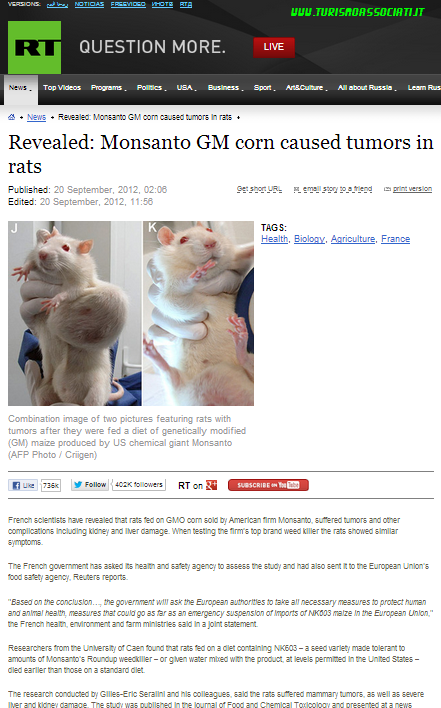
Life is a discovery, they say, not an innovation, and patents on life-forms and living processes “sanction biopiracy of indigenous knowledge and genetic resources, violate basic human rights and dignity, compromise healthcare, impede medical and scientific research and are against the welfare of animals.” Furthermore, they argue that GM crops provide no identifiable benefits either to farmers or consumers; instead, they offer only very significant risks to all living things.
GMOs are just bad news, followed by more bad news
Any consumption of GMO products is basically a smorgasbord of disaster, say these global scientists. In their thorough and fully cited open letter, they take biotechnology to task – making clear, undeniable connections between GM food crops and other products (like milk from cows injected with genetically modified Bovine Growth Hormone) and health problems for mammals in general. At the same time the GM crops themselves actually contribute to lower yields, increased use of herbicides/insecticides, unpredictable performance, poor economic returns, and a progressive monopoly on food by big corporations, they also encourage herbicide-tolerant weeds and pesticide-resistant superbugs, making their purported goal of “feeding the world” appear just as it is – clearly out of the reach of biotech industry. Scientists propose, instead, that these large food corporations are actually more the cause of world hunger currently, than they are the solution to it.
“It is on account of increasing corporate monopoly operating under the globalised economy that the poor are getting poorer and hungrier,” scientists say. “Family farmers around the world have been driven to destitution and suicide… Mergers and acquisitions are continuing.” Seed patent policies currently in place at biotech companies prevent farmers from saving and replanting seeds, an activity the scientists acknowledge, is one enjoyed even by third world farmers.
As promised; however, it only gets worse. Scientists agree that GMOs actually harm the delicate biodiversity necessary to the balance and maintenance of life on this planet. GM products, they say, “decimate wild plant species indiscriminately,” cause birth defects in mammals, kill insects essential to pollination like bees, lacewings, monarch butterflies, and pose other very serious threats related to horizontal gene transfer – for example, the “spread of antibiotic resistance marker genes that would render infections diseases untreatable, the generation of new viruses and bacteria that cause diseases, and harmful mutations which may lead to cancer.”
Multiple hazards to both animal and human health have already been identified by sources around the world, resulting either in bans on GM products or the adoption of strict labeling laws by many countries. Here in the U.S.; however, secret memoranda from inside the FDA have revealed its history of disregarding the warnings of its own scientists. Still, with a separate but similar mass appeal to the United Nations Food and Agriculture Organization in 2009 failing to make a rippled, lasting impact, one can only hope that eventually the science on GMOs – and the growing number of people who know about it – will simply be too loud to ignore.
Author: Summer Tierney - Source: NaturalNews.com via undergroundhealth.com
It’s been quickly retweeted dozens of times, indicating that the idea is interesting to many people. So let’s discuss it in more than 140 characters.

In case it needs saying: Police officers are unlike terrorists in almost all respects. Crucially, the goal of the former, in their vastest majority, is to have a stable, peaceful, safe, law-abiding society, which is a goal we all share. The goal of the latter is … well, it’s complicated. I’ve cited my favorite expert on that, Audrey Kurth Cronin, here and here and here. Needless to say, the goal of terrorists is not that peaceful, safe, stable society.
I picked up the statistic from a blog post called: “Fear of Terror Makes People Stupid,” which in turn cites the National Safety Council for this and lots of other numbers reflecting likelihoods of dying from various causes. So dispute the number(s) with them, if you care to.

I take it as a given that your mileage may vary. If you dwell in the suburbs or a rural area, and especially if you’re wealthy, white, and well-spoken, your likelihood of death from these two sources probably converges somewhat (at very close to zero).
The point of the quote is to focus people on sources of mortality society-wide, because this focus can guide public policy efforts at reducing death. (Thus, the number is not a product of the base rate fallacy.) In my opinion, too many people are still transfixed by terrorism despite the collapse of Al-Qaeda over the last decade and the quite manageable — indeed, the quite well-managed — danger that terrorism presents our society today.
If you want to indulge your fears and prioritize terrorism, you’ll have plenty of help, and neither this blog post nor any other appeal to reason or statistics is likely to convince you. Among the John Mueller articles I would recommend, though, is “Witches, Communists, and Terrorists: Evaluating the Risks and Tallying the Costs” (with Mark Stewart).
If one wants to be clinical about what things reduce death to Americans, one should ask why police officers are such a significant source of danger. I have some ideas.
Cato’s work on the War on Drugs shows how it produces danger to the public and law enforcement both, not to mention loss of privacy and civil liberties, disrespect for law enforcement, disregard of the rule of law, and so on. Is the sum total of mortality and morbidity reduced or increased by the War on Drugs? I don’t know to say. But the War on Drugs certainly increases the danger to innocent people (including law enforcement personnel), where drug legalization would allow harm to naturally concentrate on the people who choose unwisely to use drugs.
The militarization of law enforcement probably contributes to the danger. Cato’s Botched Paramilitary Police Raids map illustrates the problem of over-aggressive policing. Cato alum Radley Balko now documents these issues at the Huffington Post. Try out his “Cop or Soldier?” quiz.
There are some bad apples in the police officer barrel. Given the power that law enforcement personnel have — up to and including the power to kill—I’m not satisfied that standards of professionalism are up to snuff. You can follow the Cato Institute’s National Police Misconduct Reporting Project on Twitter at @NPMRP.
If the provocative statistic cited above got your attention, that’s good. If it adds a little more to your efforts at producing a safe, stable, peaceful, and free society, all the better.
This article originally appeared on the Cato@Liberty blog. Source: policymic.com
Nevertheless, the argument of its addictive potential remains.
In the US, marijuana is classified as a Schedule I substance, meaning that it must fulfill the requirement of having “a high potential for abuse”. But what exactly does this mean?

What is Drug Abuse?
Drug (or substance) abuse is defined as a pattern of drug use that occurs in amounts or by methods that are neither approved nor supervised by medical professionals.
Based on this definition, it is easy to see why marijuana may be considered as having a high potential for abuse, simply due to the fact that most medical professionals are unwilling to recommend or support its use. However, reasons for this lack of support are still unclear.
Since studies continue to show that marijuana poses little to no risk of long-term side effects, many are led to believe that marijuana must be dangerously addictive. But once again, scientific evidence suggests the contrary.
Addiction Potential
Studies estimate that only 1 in 10 individuals who try marijuana will ever become a regular user and display signs of dependence or addiction. Furthermore, health experts such as Dr. Jack E. Henningfield of the NIDA have ranked marijuana as the least addictive drug among substances such as caffeine, nicotine and alcohol.
Even still, marijuana addiction (also known as cannabis dependence) is a real medical condition that will affect a significant portion of users at some point in their lives.
What is Cannabis Dependence?
Cannabis dependence is a clinical condition that is classified according to DSM-IV guidelines. The DSM-IV is used by doctors in the United States and provides a standard criteria for the classification of mental conditions.
According to the DSM-IV, cannabis dependence is defined as:
A pattern of cannabis use that leads to 3 (or more) of the following symptoms:
1. Tolerance
2. Withdrawal
3. The substance is often taken in larger amounts or over a longer period than was intended
4. There is a persistent desire or unsuccessful efforts to cut down or control substance use
5. Large amounts of time are devoted to obtaining and using the substance and recovering from its effects
6. Important social, occupational or recreational activities are given up or reduced because of substance use
7. Continued use despite knowledge of having a persistent or recurrent physical or psychological problem that is likely to have been caused or exacerbated by the substance
Criteria adapted from the Diagnostic and Statistical Manual of Mental Disorders, Fourth Edition, Text Revision. Washington, DC, American Psychiatric Association, 2000 (DSM-IV-TR)
Tolerance and Withdrawal Symptoms
Some argue that marijuana differs from other substances in the sense that it is only ‘psychologically’ addictive – but this is not true.
While the psychological symptoms of addiction may be more prominent in cannabis users, studies show that cannabis dependence is accompanied by physical symptoms – such as tolerance and withdrawal – as well.
Tolerance occurs when increasing amounts of marijuana are necessary to achieve the desired effects. Tolerance is common among daily users and can be explained by the amount of time the body takes to metabolize cannabinoids such as THC.
Evidence suggests that THC can remain in the body for a significant amount of time, even after its effects have worn off. Furthermore, THC levels can build up in regular users and have been detected in blood samples taken after a month of no intake. When traces of THC are stored in the body over time, larger quantities of marijuana are necessary for users to achieve their desired ‘high’.
Withdrawal is another physical symptom of addiction that occurs when marijuana use is stopped after a period of regular use. Studies show that marijuana users are prone to a specific set of withdrawal symptoms, which include anxiety, irritability, physical tension, and decreases in mood. Once again, withdrawal is due to the build up of cannabinoid levels that occurs during regular use.
Research has found that withdrawal symptoms are most noticeable during the first 10 days of abstinence, but may be present for up to 28 days in some users. Overall, the symptoms and severity of withdrawal are expected to vary from user to user.
Source: truthonpot.com
The measure is backed by the government of President Jose Mujica, who says it will remove profits from drug dealers and divert users from harder drugs.

Under the bill, only the government would be allowed to sell marijuana.
The state would assume "the control and regulation of the importation, exportation, plantation, cultivation, the harvest, the production, the acquisition, the storage, the commercialisation and the distribution of cannabis and its by-products".
Buyers would have to be registered on a database and be over the age of 18. They would be able to buy up to 40g (1.4oz) per month in specially licensed pharmacies or grow up to six plants at home.
Foreigners would be excluded from the measure.
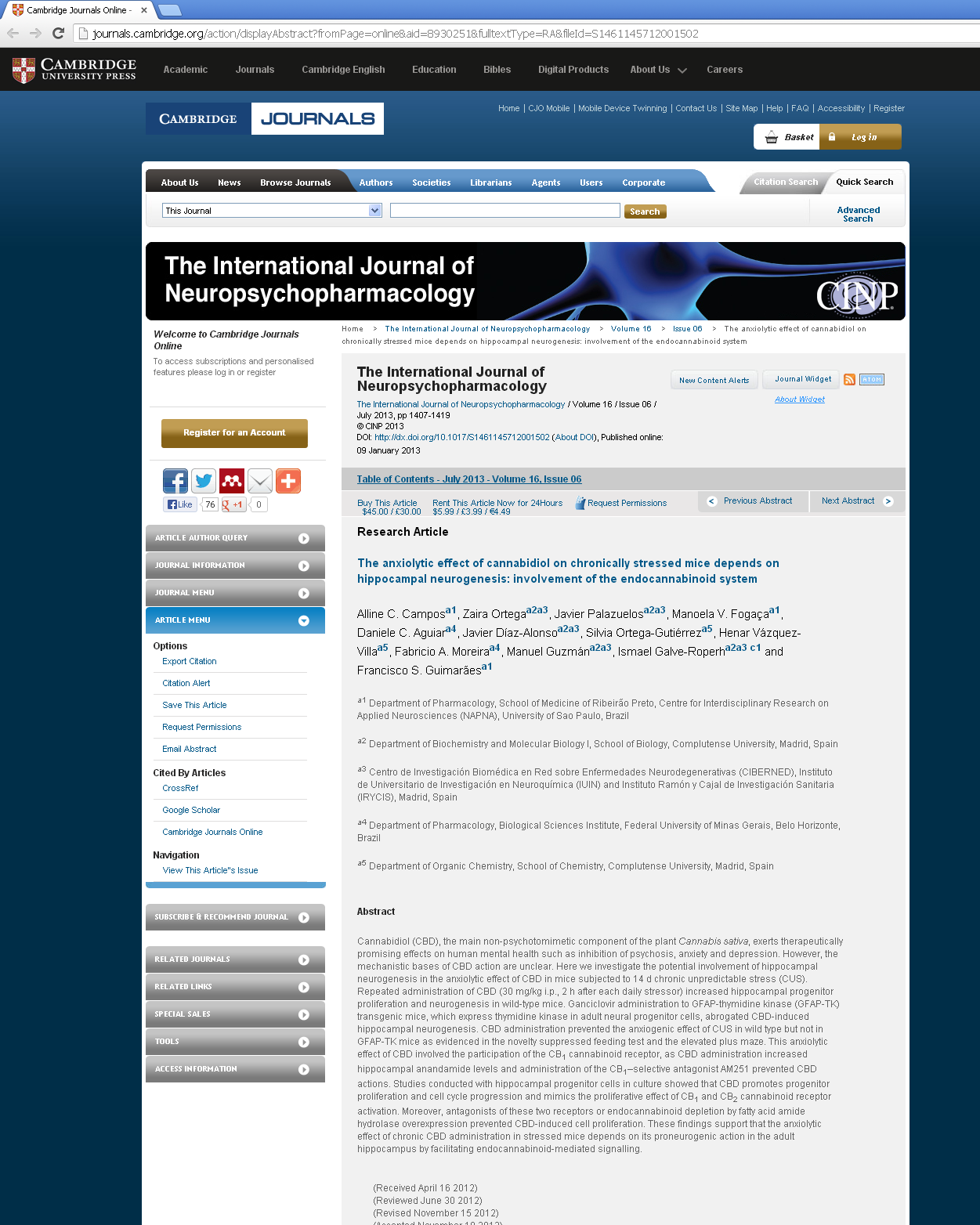
Political tussle
The bill was approved by 50 of the 96 MPs present in the lower house following a fierce 13-hour debate in the capital, Montevideo.
The supporters of the measure argued that the fight against drugs and drug trafficking had failed, and the country needed "new alternatives".
"The regulation is not to promote consumption; consumption already exists," said Sebastian Sabini of the governing centre-left Frente Amplio (Broad Front) coalition, which has a majority of one in the lower house.
Marijuana use has reportedly doubled in Uruguay over the past year. An estimated 22 tonnes of marijuana are being sold in the country annually, according to Uruguay's National Drugs Committee.
But Gerardo Amarilla of the opposition National Party said the government was "playing with fire" given the health risks he said were linked to marijuana use.
All eyes were on Dario Perez, a member of the governing coalition but a strong opponent of the bill, whose vote could have scuppered the bill.
During his 20-minute speech, Mr Perez reiterated his belief that the issue should be put to a referendum and not have been "imposed" by the government.
But to applause by supporters of the bill in the public gallery, he finally concluded that as long as he was a member of the coalition, he would vote with it, despite his personal misgivings.
The bill is now expected to be approved by the Senate, where the left-wing government has a bigger majority.
But opposition politicians said that even if the law made it through the senate, they would launch a petition to have it overturned.
A survey carried out before the vote by polling organisation Cifra suggested 63% of Uruguayans opposed the bill.
Papal opposition
The progress of the bill is being watched closely across the region, says BBC Mundo correspondent in the region Ignacio de los Reyes.
For decades, drug trafficking has caused tens of thousands of deaths throughout Latin America.
Uruguay may have not experienced the bloodshed caused by drug trafficking, but the proposal could be seen as a test for violence-torn nations looking for an end to their drug wars, our correspondent adds.
The vote also comes just days after Pope Francis criticised drug legalisation plans during a visit to neighbouring Brazil.
The pontiff said it was "necessary to tackle the problems which are at the root of drug abuse, promoting more justice, educating the youth with the values that live in society, standing by those who face hardship and giving them hope for the future".
Source: bbc.co.uk
Luckily, many sufferers around the world have discovered the benefits of medical marijuana and are using it legally or illegally to treat their symptoms.
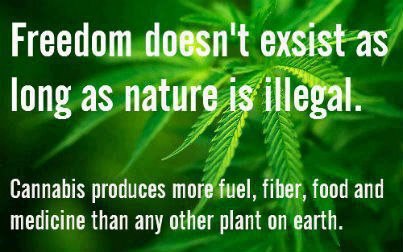
It is believed that 1-4% of MS patients in the UK are treating themselves with marijuana and as much as 14-16% of MS patients in Canada.
What is MS?
Multiple sclerosis is an autoimmune disorder affecting the brain and spinal cord. It is the most common cause of neurological disability in young people and tends to strike around the age of 30.
The disease is caused by the body’s own immune system attacking and damaging the myelin sheath – an important part of nerve cells that help in conducting nerve signals. As a result, the ability of nerve cells to communicate with each other is compromised.
Almost any neurological symptom can occur due to MS. As the disease progresses, physical and cognitive disability eventually result. Symptoms of MS include:
• Fatigue
• Cognitive impairment
• Muscle stiffness
• Spasticity
• Tremor
• Poor mobility and balance
• Pain
• Vision problems
• Urinary incontinence
• Sexual dysfunction
How Can Marijuana Help?
Over the years, many studies have investigated the effects of medical marijuana on multiple sclerosis. Clinical studies have shown that cannabis is effective in providing relief from many of the symptoms associated with MS. A small number of studies have provided evidence suggesting that cannabinoids may even inhibit the progression of the disease.
Symptom Management
One of the largest studies to investigate the effects of cannabinoids on multiple sclerosis was a randomized clinical trial (RCT) involving 667 patients from 33 medical centers in the UK. The subjects were assigned to one of three groups: synthetic THC (Marinol®), whole cannabis extract (Cannador®), or placebo.
During the 15 week trial period and 12 month follow-up, patients given cannabinoid-based medicine reported improvements in symptoms of spasticity, spasms, pain levels and quality of sleep. Results from the follow-up study also showed reductions in certain measures of disability associated with MS.
Pain is one of the more debilitating symptoms of MS and remains challenging to treat with traditional medications. It’s no surprise that patients given cannabinoid-based medications report significant pain relief as studies have proven marijuana to be an effective analgesic. Medical marijuana is especially helpful for MS patients who suffer from a specific type of pain called neuropathic pain. Studies have found that cannabis is just as effective (if not more) at treating neuropathic pain than currently prescribed pharmaceuticals.
Bladder problems such as urinary incontinence are another common symptom that may be effectively treated with cannabis. Although research on this topic is sparse, studies including the RCT mentioned above and a smaller open-label pilot study have both found cannabinoids to significantly reduce the bladder problems associated with MS.
Marijuana’s potential for treating the symptoms of multiple sclerosis is gradually beginning to be recognized around the world. Currently, cannabis and/or cannabinoid-based medications can be legally prescribed to MS patients in Canada, Denmark, Spain, Germany and the United Kingdom.
Is Marijuana The Cure?
No one has yet to claim that marijuana is the cure for multiple sclerosis. However, there are a small number of studies involving animal models that seem to show that cannabinoids can protect neurons from degeneration, which would ultimately slow the progression of the disease.
In a study published in 2003, researchers from the University College of London’s Institute of Neurology concluded “…in addition to symptom management, cannabis may also slow the neurodegenerative processes that ultimately lead to chronic disability in multiple sclerosis and probably other diseases.”
Another study published in 2012 by Spanish researchers came to a similar conclusion.
Despite such positive findings, these studies only represent the early stages of clinical research. Much more needs to be investigated before the scientific community will be ready to draw any conclusions about cannabis and MS.
Source: truthonpot.com
Under this legislation, substances are separated into one of five Schedules (classifications) according to their potential for abuse, accepted medicinal use and international trade laws.
Cannabis is currently classified as a Schedule I substance – a position it has retained since the Controlled Substances Act was drafted over 42 years ago.
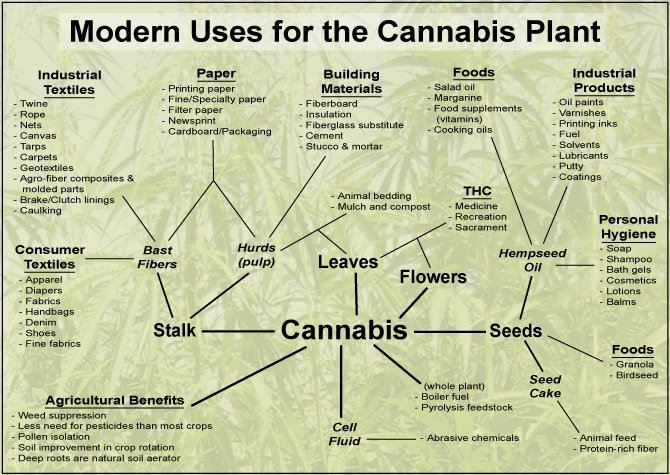
Schedule I Laws
The classification of a Schedule I controlled substance is assigned to only the most dangerous and least medically useful of drugs, which subjects both researchers and offenders to the highest level of restrictions and penalties that can be administered. For a drug to be placed in the Schedule I category, it must fulfill all three points of the following criteria:
1. The drug or other substance has a high potential for abuse.
2. The drug or other substance has no currently accepted medical use in treatment in the United States.
3. There is a lack of accepted safety for use of the drug or other substance under medical supervision.
Title 21 of the U.S.C. § 812b
Classification of Cannabis
Even at first glance, the definition of a Schedule I substance seems a bit too harsh to be applied to marijuana. In fact, among other drugs that share the same category – such as heroine and opiates – none can make claim to being a treatment for so many disorders while having no risk for overdose like cannabis can. Although its potential for abuse might still be debatable, an overwhelming amount of scientific evidence gathered over the past few decades has proved the last two points as being grossly inaccurate.
So how has cannabis managed to maintain such a mistaken classification under federal drug policy for all these years? To answer that question, let’s look at how marijuana came to be classified as a Schedule I substance in the first place.
National Commission on Marihuana and Drug Abuse
While the Controlled Substances Act was being drafted in 1970, marijuana was placed in its Schedule I category on advice from Assistant Secretary of Health Roger E. Egeberg. In his letter to Harley O. Staggers, Chairman of the House Committee on Interstate and Foreign Commerce, Egeberg made it clear that the classification was meant to be temporary:
“Dear Mr. Chairman: In a prior communication, comments requested by your committee on the scientific aspects of the drug classification scheme incorporated in H.R. 18583 were provided. This communication is concerned with the proposed classification of marihuana.
It is presently classed in schedule I(C) along with its active constituents, the tetrahydrocannibinols and other psychotropic drugs.
Some question has been raised whether the use of the plant itself produces “severe psychological or physical dependence” as required by a schedule I or even schedule II criterion. Since there is still a considerable void in our knowledge of the plant and effects of the active drug contained in it, our recommendation is that marijuana be retained within schedule I at least until the completion of certain studies now underway to resolve the issue. If those studies make it appropriate for the Attorney General to change the placement of marijuana to a different schedule, he may do so in accordance with the authority provided under section 201 of the bill…”
Sincerely yours, (signed) Roger O. Egeberg, M.D.
The reference to “the completion of certain studies now underway” was to the National Commission of Marijuana and Drug Abuse, which was created by public law 91-513 for the specific purpose of studying marijuana abuse in the United States.
The Commission was chaired by former Pennsylvania Governor Raymond P. Shafer and consisted of 13 members, 9 of which were handpicked by President Nixon himself. To date, the National Commission on Marijuana and Drug Abuse is the only congressional commission to ever assess marijuana policy.
In 1972, the Commission completed and presented their report entitled “Marihuana: A Signal of Misunderstanding” to Congress, which detailed their investigation and overall recommendation for marijuana to be reclassified and prohibition to be ended.
Marihuana: A Signal of Misunderstanding
In their report, the commission determined that minor possession offenses should be decriminalized under federal law. Likewise, the Commission recommended that states should also eliminate criminal penalties for minor pot offenses.
“[T]he criminal law is too harsh a tool to apply to personal possession even in the effort to discourage use. It implies an overwhelming indictment of the behavior which we believe is not appropriate. The actual and potential harm of use of the drug is not great enough to justify intrusion by the criminal law into private behavior, a step which our society takes only with the greatest reluctance.”
The report acknowledged that, decades earlier, “the absence of adequate understanding of the effects of the drug” combined with “lurid accounts of [largely unsubstantiated] ‘marijuana atrocities” greatly affected public opinion and labeled the stereotypical user as “physically aggressive, lacking in self-control, irresponsible, mentally ill and, perhaps most alarming, criminally inclined and dangerous.” However, the Commission found that the drug typically inhibited aggression “by pacifying the user… and generally produc[ed] states of drowsiness, lethargy, timidity and passivity.”
The findings of the report were met with expected resistance from Congress and were largely ignored by the Nixon Administration. As the infamous white-house tapes would reveal, President Nixon fostered a strong opposition to the Commission’s recommendation even before it was released. In 1971 – a year before the report was completed – Nixon warned Shafer, “You’re enough of a pro to know that for you to come out with something that would run counter to what the Congress feels and what the country feels, and what we’re planning to do, would make your commission just look bad as hell.”
And despite the firm recommendation of the federally commissioned report that took years to complete, cannabis retained its classification as a Schedule I narcotic under the Controlled Substances Act, which prevents any person or organization from free access to the cannabis plant – whether for recreational, industrial or medical purposes.
To this day, the decision of the Nixon Administration to ignore the Commission’s recommendation to end prohibition continues to be upheld by federal policymakers.
Source: truthonpot.com
The main change is to eliminate personal production in favour of licensed commercial producers who would be inspected and audited by Health Canada.
Spokesperson Stéphane Shank said the government just finished a consultation period on the changes last month. The government is now analyzing the results, with a plan to implement the changes by March 31, 2014.
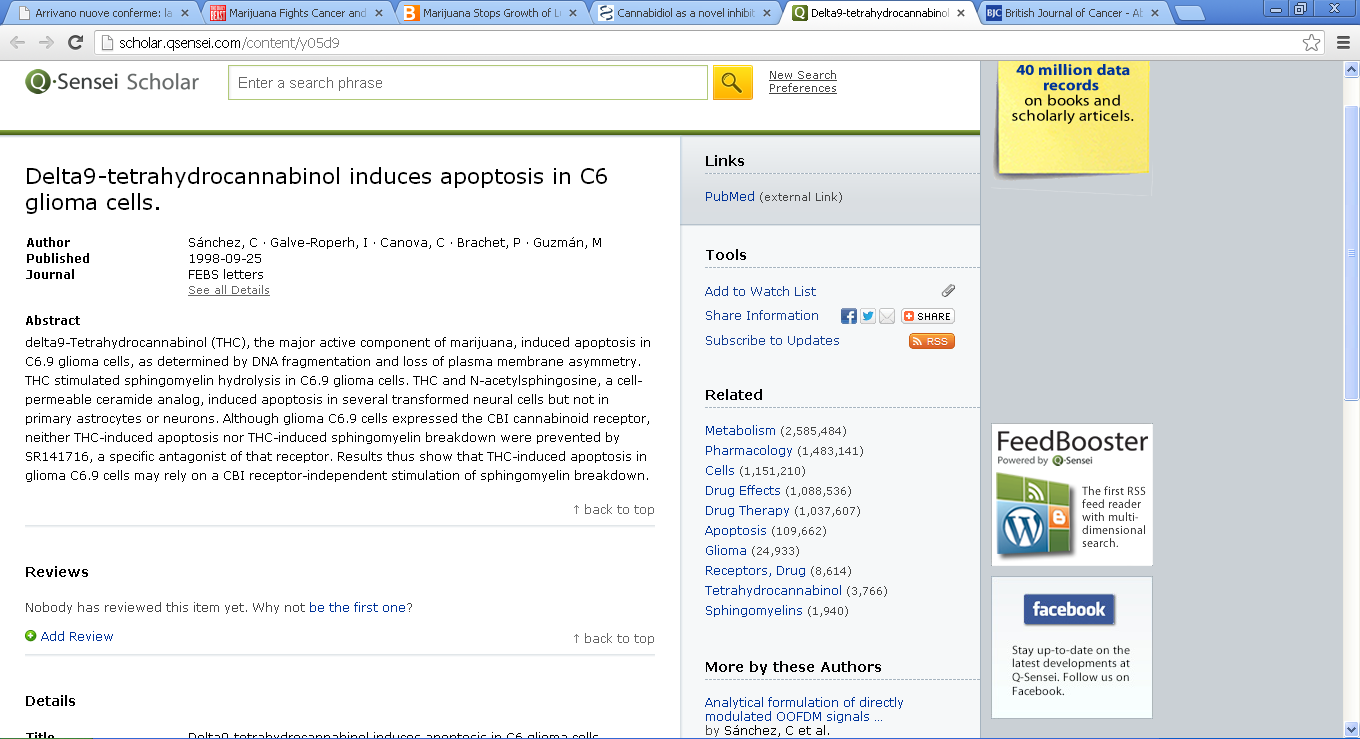
Currently there are three types of medical marijuana licences — authorization to possess, personal-use production (can only produce for yourself), and designated-person production (can produce for someone authorized to possess).
The licences to possess marijuana or grow marijuana for yourself require a medical declaration by a doctor. Doctors are supposed to ensure patients have severe pain or other health problems that cannot or should not be treated by a conventional treatment.
Someone with a recent criminal record for drug activity cannot get a licence to grow for someone else. Health Canada requires a criminal conviction to revoke someone’s licence.
However, Shank said the government cannot readily provide statistics about how many licences have been revoked.
Health Canada has 15 inspectors.
The amount of marijuana someone can produce is based on a specific calculation on the patient’s medical needs and can vary widely. There are extra steps if the maximum amount is more than 5 grams dried daily.
Those with a licence to produce marijuana for another person can hold two licences, and only four licences are allowed to be used at one address, Shank said.
For more information about the Marihuana Medical Access Program and planned changes visit Health Canada’s website.
Source: thespec.com via truthonpot.com
|